Do you want to know how to take care of leather boots to keep’em better looking and durable?
I am pretty sure you’ll say Yes! Leather boots are considered to be the best boots you can wear. It’s easy to see why because leather boots have been around for a long time and they’re great for keeping your feet warm during the winter season. These boots have been made from animal skins for centuries and they’ve been made of various materials ever since then. In this article, we’ll talk about the different types of leather that are used in making leather boots and how you can take care of them so that they stay looking great for a long time.
Let us explore some easy but useful tips to get you going!

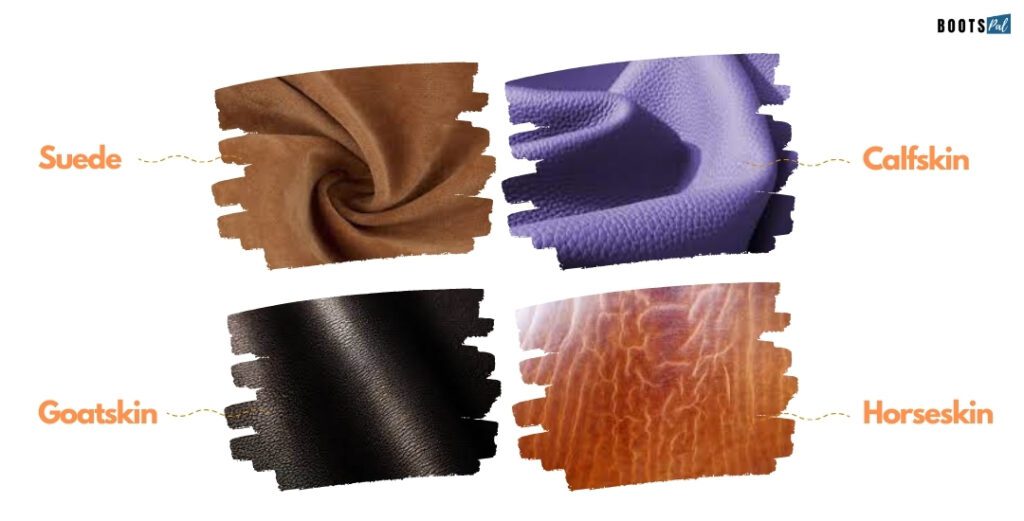
Before diving deep, let us know a little more than we generally know regarding the leather used in boots. Good leather is generally supple and sturdy enough to last for a long time, First, let’s talk about the different types of leather that are used in making boots.
- The most common type of leather is suede which comes from cows and sheep.
- Another type of leather that you can find in boots is calfskin which comes from calves.
- The third type of leather that you can find in boots is goatskin which comes from goats.
- There are some boots which are made of horse leather.
In addition to the types of leather that are used, there are also different ways that they’re made and these differences have an impact on how long your boots will last for.
How Important Is It To Take Care Of Boots?
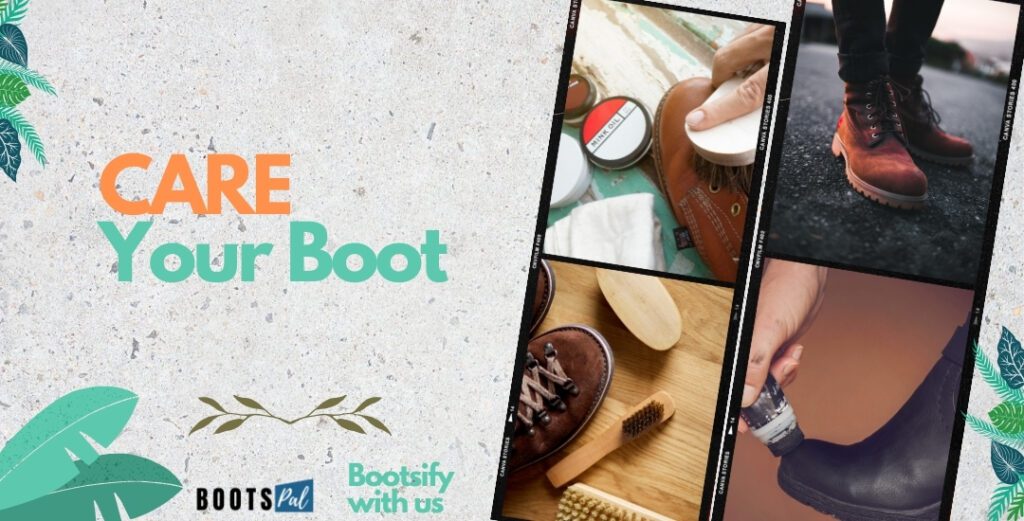
Boots are typically expensive, therefore taking care of them is extremely important. If you neglect your boots and do not take proper care of them when needed, they will wear out in a short amount of time and need replacing far sooner than expected! This can be costly especially if the leather is high quality or handmade. In addition to this cost issue, it’s also frustrating that your favorite pair has worn down before its seasonable lifespan was up.
When Should You Start Leather Boots Care?
The earlier you start caring for your boots – the better off they’ll be long term – even if it means just getting into good habits around oiling regularly. Even though most people don’t start caring for their boots until they’ve had them for a few months or even years, you should start as soon as possible to maximize the life of your boot.
How Often Should You Be Taking Care of Boots?
There is no “hard and fast” rule on how often you need to clean, condition, polish, etc. However, there are some general guidelines that can help keep your leather or suede boots in tip-top shape: Some people recommend cleaning once per month; others do so every week. When it comes time for conditioning, most will advise doing this after every wash/cleaning session but then following up with another application at least once monthly or more depending on use (again – consult an expert if needed). Polishing depends largely on preference, many people will only polish after every other cleaning session but others do it more often.
What To Do While Taking Care Of Boots?
How to care for leather boots – a burning question at this stage. The first thing you need to know is that the care products may vary depending on what kind of leather your boots are made from. For example, if they’re waterproof then using a conditioner designed for non-waterproof work boots could cause them to lose their water resistance faster. The second thing you should always keep in mind is doing less rather than more: After all, too much lotion can make dirt and stains harder to remove later down the road! If something seems like overkill or there’s any doubt about its use – don’t risk it! However, some common guidelines will help you do it in an easy way :
Get the Fit Right

If you don’t get your boots fit right, then they won’t be comfortable to wear or even break incorrectly. You should try on the boots several times before buying them so that you can make sure that they are the correct size. If you need help getting your boots fitted, then you should visit a shoe repair shop or an expert who can help you. You should also take the time to break them in before wearing them for long periods of time. If you do this, then they will be more comfortable to wear and they will last longer.
Break In Your Boots Fast

A new pair of boots should never be worn before taking sufficient time to break them in. Starting your first day at the job site by doing so will only cause pain and the potential for giving up on these boots quicker than usual. Starting about a week before wearing your new boots to work, wear them in the evenings around the house for some time. As your feet get accustomed to the feel of these tighter, heavier boots, add another 10-15 minutes for each day you’re wearing them during the day until they’ve been broken in. Few quick tips regarding how to break in boots and suede boots fast :
- If your boots are made of suede, you should not put them in the dryer. This can cause damage to the suede and may even weaken it.
- If you have a pair of leather boots that have been in the dryer, you should take them out and let them air dry for a day or two before wearing them again.
- You should wear your boots at least every other day during this process. The more time that they are worn, the quicker they will break in and the shorter the break-in period will become.
- If your boots are made of leather that is thinner than the others, then you should put them in a bag with some salt water. Then let them sit overnight before wearing them again. This will help soften the leather and make them more comfortable to wear.
- When you’re breaking in your boots, it’s important that you don’t overdo it to shorten the break-in period or else they’ll end up being uncomfortable to wear.
Clean Them Regularly
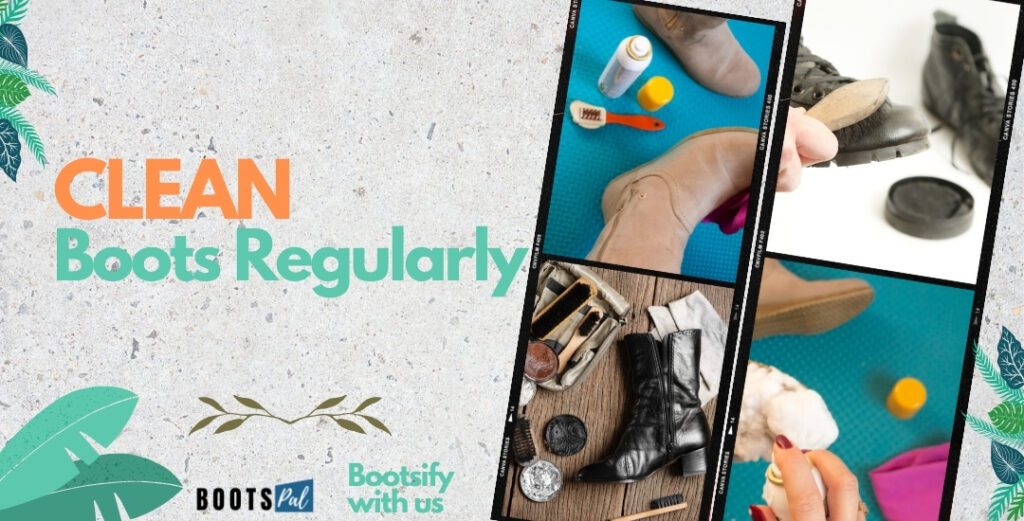
Work boots work best when they are clean because it helps prevent bacteria and fungus from growing. There are numerous ways to clean your leather and suede boots at home. It’s important to wipe off the loose dirt by using a soft brush (e.g. horsehair brush) and hose off work shoes after every use so you can remove the dirt, grime, oil, or grease that gets on them while working. Few quick tips on how to clean boots below:
- Frequency: You should clean your boots at least once a week.
- You can use a damp cloth, mild soap, and water to wipe off and wash the upper, outsole, insole, laces, and inner area.
- If you have the time then you should use some water-based cleaner that is made specifically for removing stains and cleaning boots made of suede or other types of leather. Leather cleaner won’t damage the leather, but it will make the boots smell nice.
- You should also clean your boots if they get too sweaty or dirty to wear. If you do this, then you’ll want to use a mild soap and water mixture instead of leather cleaner.
- You can also try to clean them or remove stains with a dry cloth. Just make sure that you clean the dirt and sweat off of them before wearing them again.
- You should also avoid wearing your boots when they are wet or dirty to help get rid of bacteria that can be on the inside of your boots. This will help keep the leather supple from becoming weak and brittle.
- Do not attempt to speed up the process by using hairdryers/blow-dryers since they can damage the material over time if used too many times in succession (especially hot air).
- Sometimes you can be tempted to use saddle soap. It is a common and cheaper option, but not necessarily the best. Saddle soap is a strong alkaline-based which performs cleaning quite satisfactorily, but repeated use of saddle soap may damage and darken the leather. When talking about saddle soap vs mink oil for boot conditioning- the latter will win by miles.
Condition Them Regularly with Leather Conditioner
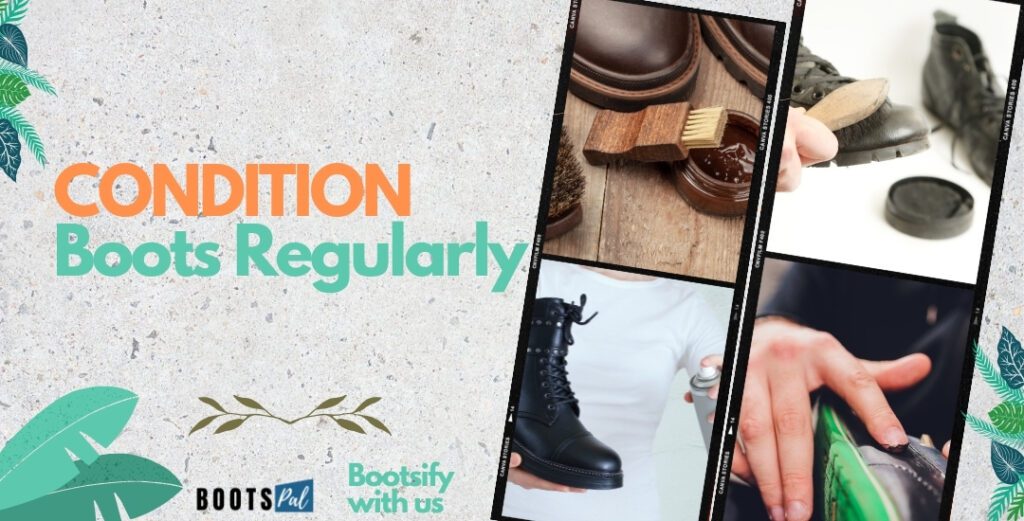
Boots need proper conditioning in order to maintain their condition and make them stronger and long-lasting. To facilitate the breaking-in process of new work boots, use a leather conditioner to moisturize. This will quickly soften up the material and help it stretch more easily. You can condition your boots at least once per month using petroleum jelly-based products or other suitable oil-type leather conditioners that are safe for use on leather uppers – make sure you remove dirt build-up with a clean cloth or brush prior to applying conditioner, because any residue will be sealed after it dries; this can cause cracks to appear on the surface & will void all warranties. Another thing is – to be very sure and precise if you want to use olive oil on leather products. Few quick tips on how to condition boots easily at home:
- Frequency: You should condition your boots once a month.
- You can use some thin layer of cream polish or suede cream to help make the leather soft and supple again.
- To condition your boots, you’ll want to rub them with the paste until it is completely absorbed into the material. You should then let them dry.
- After they are completely dry, you can buff them with a soft cloth to make them shiny again.
- Consider adding polish once per month depending on use and condition. Polish helps keep it from drying out and cracking while also protecting it from water, dirt, and stains.
Arrange Waterproofing for Entire Boot
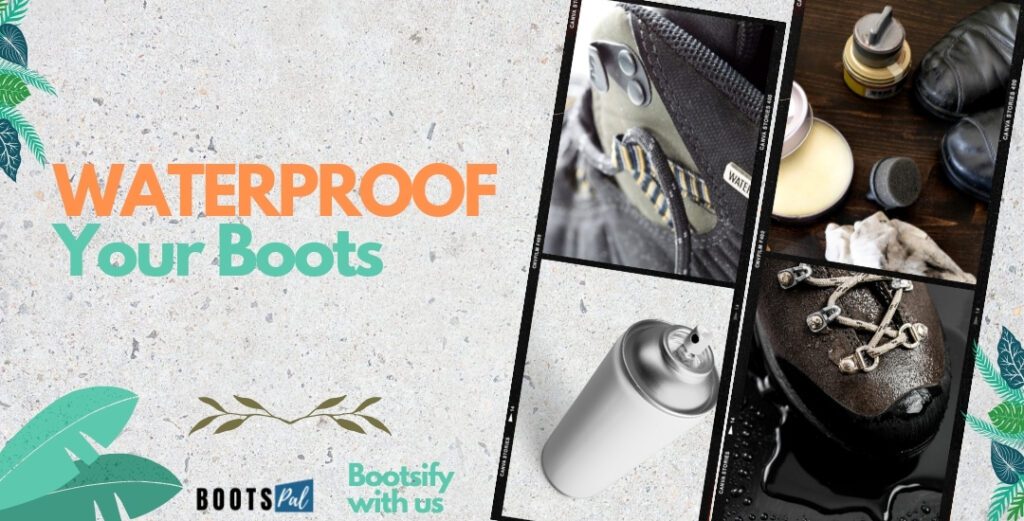
With water damage decreasing the longevity of work boots, protecting them with waterproofing treatment like water-resistant spray or wax should be a routine step. If your boots are not made of waterproof materials like gore-tex, these items help as protective shields for work boots against rain, sleet, and snow and prevent moisture from damaging the materials of your boots. Few quick tips on homemade work boot waterproofing:
- You can use wax to help waterproof your boots. There are several different types of wax that you can use for this purpose, but the best one is made from beeswax and paraffin.
- To apply the wax, you’ll want to put some on a cloth and rub it into the leather. You should then let them dry before wearing them again.
- If you’re worried about damaging your boots, then you can apply some waterproofing spray to your boots instead of using wax.
- It is of great importance to make your work boots properly dried whenever they become wet. A boot dryer or shoe tree does this job by drying them up.
- You can also use kitchen tissues or old newspapers by stuffing them inside wet work boots to acquire the dampness and prevent the horrible boot smell.
- Applying Mink Oil to condition boots and to create a moisture-absorbing waterproof coating – can be a great option too.
Wear Moisture Wicking Socks
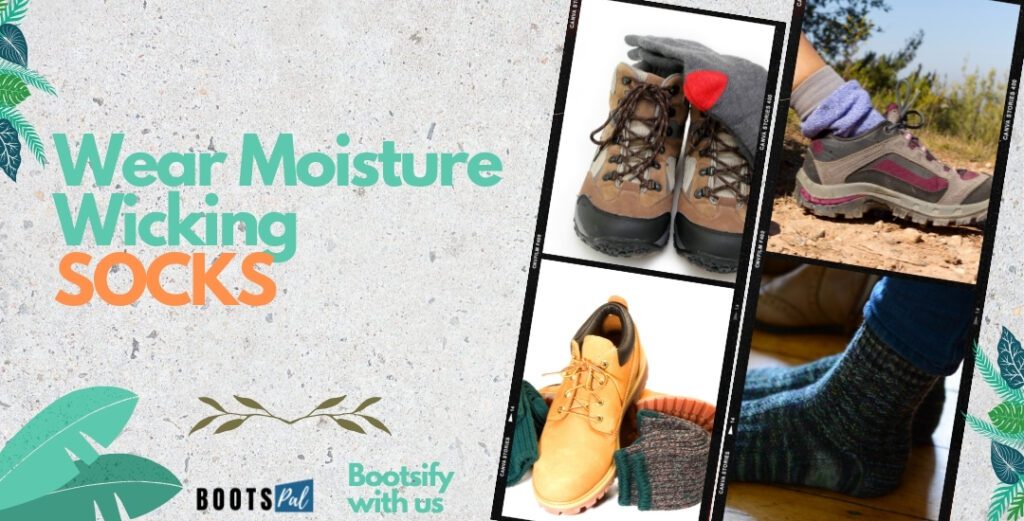
It’s a good idea to wear moisture-wicking socks while wearing boots, i.e. cowboy boots, in order to reduce sweating and make them last longer by absorbing excess perspiration from your foot. This will also help keep the shoes fresh, dry & comfortable for maximum performance on all levels when working or playing outdoors during long days at a time.
Invest In Quality Work Boot Insoles
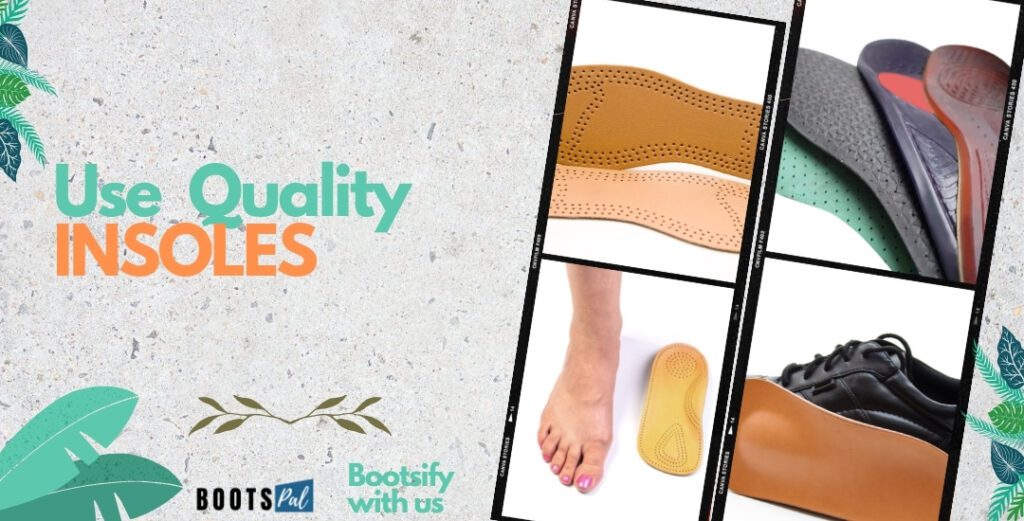
The main purpose of having quality insoles is that they provide extra comfort and support which makes it possible for you to walk/work with better balance without getting tired too soon; this prevents potential injuries such as ankle sprains etc., especially if you spend most of your day walking around outside like factory workers do.
Inspect Them Regularly
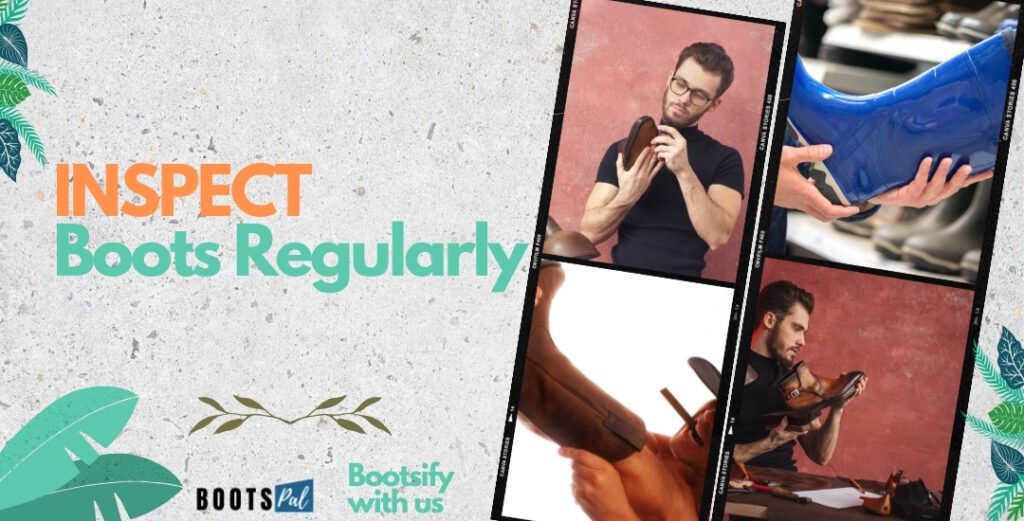
Checking up on your work boots regularly may seem like a waste of time but if you’re investing money into high-quality footwear then also invest time/money into routine inspections so they last longer. Ensuring boot care properly during their lifetime with regular cleaning & conditioning practices, water resistance sprays, etc., these are measures are quite important because it prolongs their life significantly since leather is the primary material used for work boots.
Resole Boots
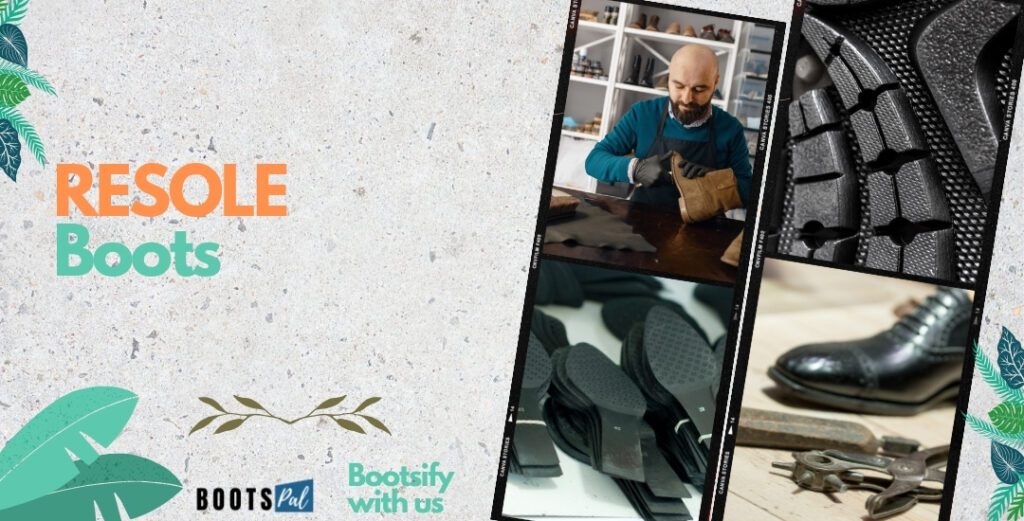
If work boots have soles that are worn down, you should take them in for resoling. Work boots can come with an extra heel or other sole pieces attached as well as a new layer of rubber on the bottom for more durability and longer wear time. This is quite a cost-effective way to work on work boots and it can be done by someone you know or any reputable work boot repair service.
Use a Boot Dryer or Shoe Tree

Keeping water out is one of the best ways to make sure your boots don’t get damaged and can maintain their shape/looks & comfortability, so it’s important that you properly dry them after every use by using a boot dryer or shoe tree (e.g. cedar boot trees).
Use a Shoe Horn
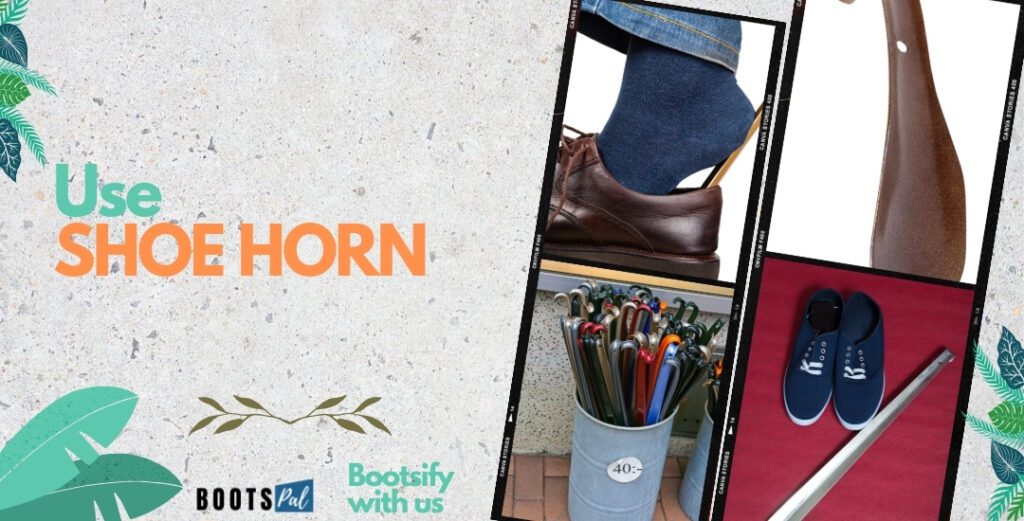
Using a shoe horn to put on and take off work boots is another very important form of boot care that will make your work boot last longer. When you use the right size shoe horn, it helps preserve the shape/looks & comfortability of uppers by keeping them free from rips, etc., while also eliminating creases that can be caused when putting them on quickly without using one.
Invest In Quality Leather Work Boots
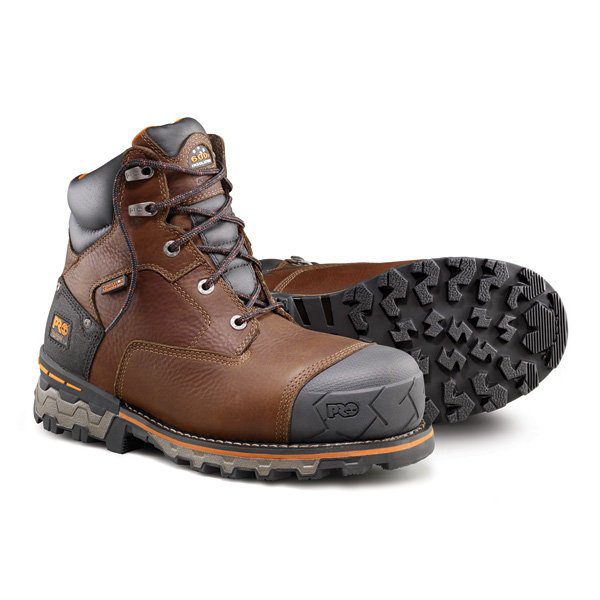
When boot care is not proper, they can become brittle and break down. While it might be tempting to buy a cheap pair in order to save money at the time of purchase, overpaying for work boots upfront is not so bad when you consider how much longer they’ll last. Knowing which work boot is best for you and investing in quality work shoes that will wear well and last you a long time is always worth it.
Miscellaneous Useful Tips For Boot Care
Here are a few miscellaneous tips that will help you take good care of your boots:
- Avoid rubbing them against other materials.
- Pay special attention to avoiding excessive oiling during conditioning.
- Try to use low ph shampoo and quality waterproofing agent.
- Keep your boots away from sharp objects and avoid wearing them when they are wet or dirty.
- Store your boots in a dry place, but not too close to other materials that can damage the leather.
- Avoid direct sunlight or very close proximity to a heat source while drying your boots.
- While washing your boots, use a clean rag and avoid rubbing them too hard.
- Dry your boots completely, if needed, for a few days, before wearing them again.
Have some free time to spare? Let us enjoy quickly a practical video by great reviewer Carl Murawski :
Frequently Asked Questions
What If My Boots Are Already Worn Out?
If your boots are already looking a bit worse for wear, then consider purchasing some boot oil to revive them! They will look almost as good as new in no time at all – trust us… we know from experience! It’s important here to make sure you purchase the right kind of boot oil though: Make sure they’re waterproof before using any product on them because if not – this could cause more harm than good.
How to Take Care of Cowboy Boots?
Here’s some good news for those who own cowboy boots. These boots are made from thinner leather and because of that, they require less conditioning than regular work boots. Since the weather is also generally dryer in summertime, cowboy boots would benefit from an occasional light coat of waterproofing spray to keep them looking great and lasting longer.
What If My Leather Work Boots Are Too Tight?
There are times when work boots that you buy may not fit perfectly in the beginning. This can typically happen if you purchase them online or they “break in”. Use a shoe horn when putting on and taking off.
How to take care of suede boots?
Suede leather requires a slightly different approach to regular work boots. Firstly, you need to make sure they are completely dry before putting them on or wearing them – this helps avoid any possible dampness from causing damage. Secondly, make sure you don’t wear the same pair every day and rotate your boots. Use a suede brush to remove any surface dirt, and always remember to store them in a cool dry place out of direct sunlight.
How to Take Care of White Leather Work Boots?
White leather work boots are a tricky thing. Since the color is usually light in tone, it’s more susceptible to damage and staining from dirt and whatnot. If you’re into this style then we recommend the following: Use waterproofing spray (see above) or shoe protector before wearing lately, here’s another article we’ve written that talks about how to take care of white work boots!
Final Words
Leather boots are an investment, so it’s important to ensure boot care properly. If you neglect your footwear then the consequences will be serious – especially when they come time for replacement! Instead of spending more money, the best way to extend their life is by caring for them regularly and taking steps to keep them clean, conditioned, and polished as much as possible. Most importantly though: don’t try anything out on your own that might cause damage or result in other issues! Only use products designed specifically for boot care (and if unsure ask a professional) because using the wrong product could ruin it faster than normal wear-and-tear would have done, not what you were hoping for I’m sure.
- Are Steel Toe Boots Safe? Debunking Myths and Unveiling Facts - July 23, 2023
- Ensuring a Firm & Safe Footing: An In-depth Guide to Safety Toes in Work Boots (Types, Features, & More) - July 17, 2023
- Silence the Symphony of Squeaky Steps: How to Stop Leather Boots from Squeaking (And Shoes Too) - July 3, 2023